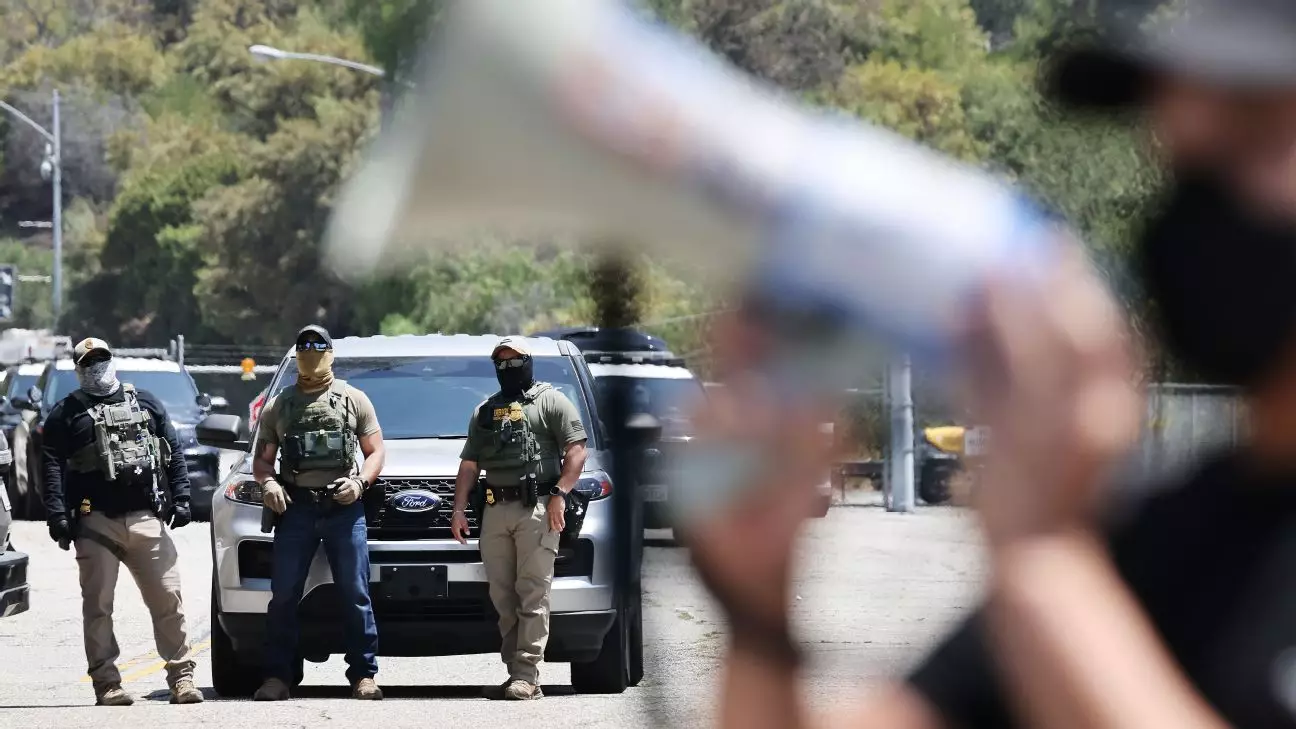On a seemingly ordinary Thursday morning, Los Angeles witnessed an alarming scene that quickly escalated into a heated confrontation between federal agents and local protests. The U.S. Department of Homeland Security (DHS) made headlines as it dispatched federal agents to Dodger Stadium, a historically significant venue not merely for baseball but as a cultural landmark for Angelenos and immigrants alike. This unexpected event ignited social media outrage and stirred protests against immigration enforcement, illuminating the simmering tensions surrounding immigration policy in the city.
Dodgers president Stan Kasten promptly responded to the situation, stating that federal agents were denied access to the stadium’s property, a move that underscored the organization’s commitment to the immigrant community. However, this tension disrupted the Dodgers’ plans to announce support initiatives for local immigrants, forcing them to postpone a timely message of solidarity. Kasten assured the public that collaboration with community groups would continue, yet the timing became a cloud of uncertainty—reflections of the chaos surrounding federal immigration actions.
Federal Agents and the Confusion of Identity
Eyewitness accounts detailed a caravan of unmarked vans and SUVs arriving at Dodger Stadium, prompting initial concern that the federal agents were from U.S. Immigration and Customs Enforcement (ICE). However, confusion soon arose when ICE publicly denied any involvement, claiming they had “never been there.” Instead, the agency clarified that the agents were part of the U.S. Customs and Border Patrol (CBP), asserting that their presence was unrelated to the Dodgers or any operational enforcement actions.
This discrepancy raised substantial questions about transparency and accountability within federal enforcement agencies. While DHS and CBP attempted to distance themselves from the incident, the immediate result was a palpable sense of hostility between local communities and federal authorities. The event framed a narrative of ongoing mistrust—accusations and denials danced around one another, leaving citizens questioning whom to believe and what measures would be taken moving forward.
Protests: A Manifestation of Fear and Anger
The protests that emerged were not merely spontaneous reactions to Thursday’s events; they were the culmination of weeks of growing anger at the federal government’s aggressive immigration enforcement tactics in Los Angeles. Just days prior, demonstrators took to the streets in response to a spate of ICE arrests throughout the city, causing unrest that included freeway blockades and incendiary displays of resistance. The city became a crucible of palpable frustration, especially amidst the controversial deployment of National Guard troops.
The participation of locals—including immigrant families and advocates—demonstrated a strong, unified front against what they viewed as unjust policies. The administration’s insistence on ramping up enforcement led community members to take to the streets, resulting in clashes with law enforcement that further exacerbated an already fraught dynamic between federal and local jurisdictions. The use of tear gas, rubber bullets, and flash grenades served as a troubling reality of the government’s attempt to maintain order in a town rife with dissent.
Immigration Policy and Community Resilience
In a broader context, the events surrounding Dodger Stadium point to a larger conversation about immigration enforcement in America. Minority communities, particularly immigrants, have increasingly found themselves at the intersections of policy and practice that often vilify their existence. The backlash against ICE and federal enforcement has led local leaders and organizations to unite in defense of immigrant rights, fostering a spirit of resilience and advocacy amid adversity.
The disappointment directed at the Dodgers for their initial silence reveals an expectation that cultural institutions should take stands in support of vulnerable communities. Their belated attempt to engage with immigration groups showcases the pressing responsibility that such organizations must embrace, rather than shying away from volatile issues that impact the very individuals who patronize their events.
In scrutinizing the confrontations at Dodger Stadium, we recognize the power dynamics at play, pointing to an urgent need for systemic change in how immigration laws are enforced. Los Angeles stands on the brink of significant discourse, as residents and leaders advocate for a more humane approach that respects human dignity over punitive measures.


Leave a Reply